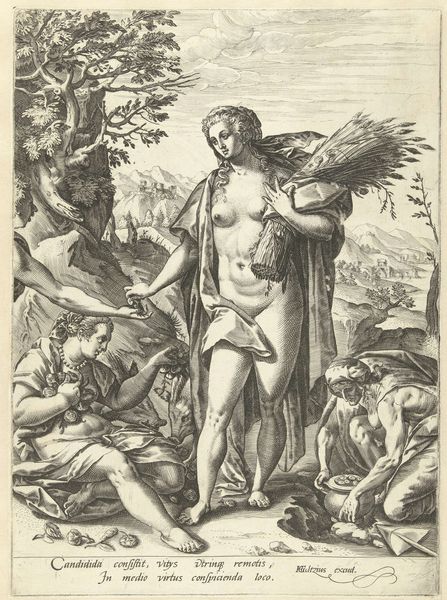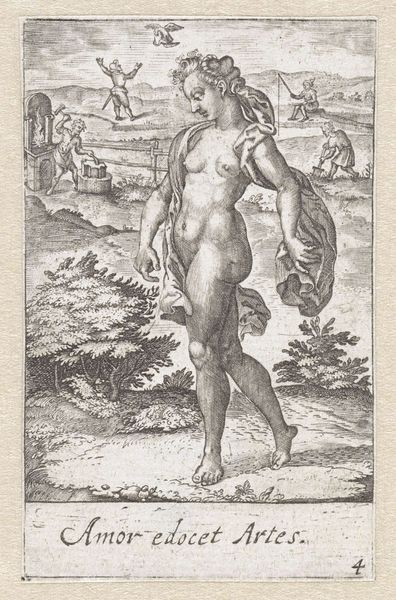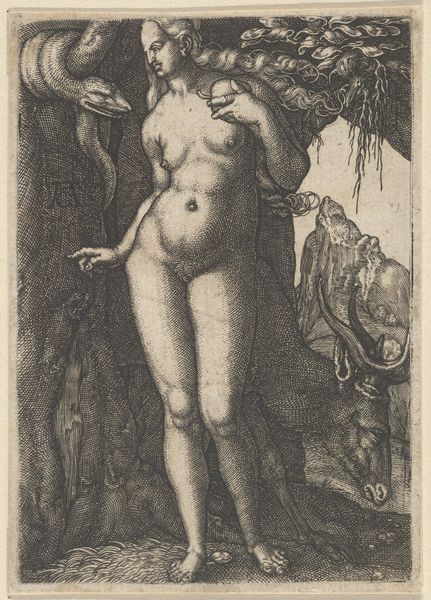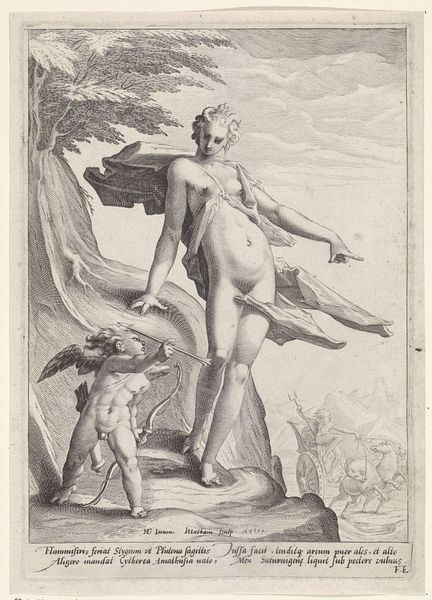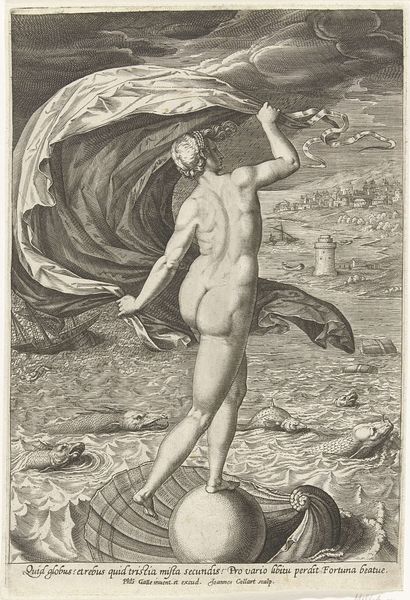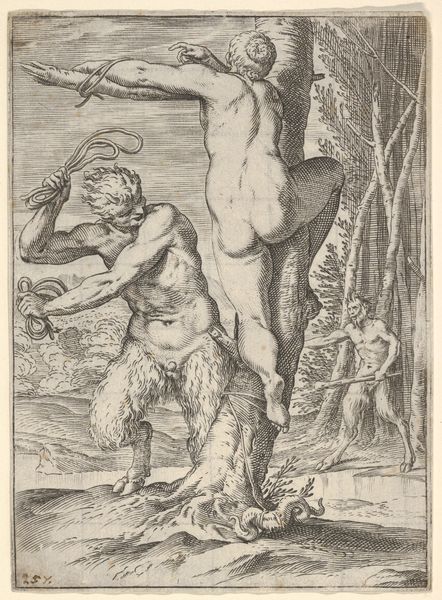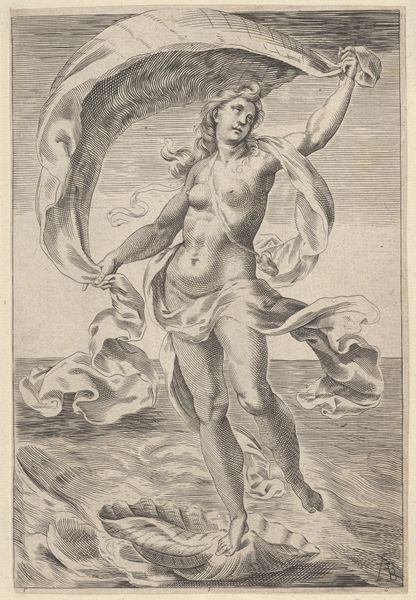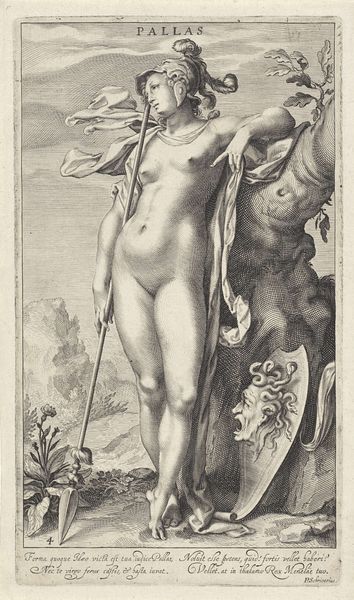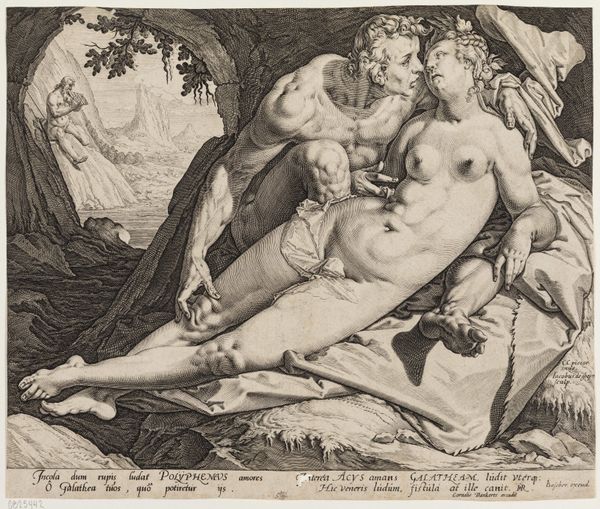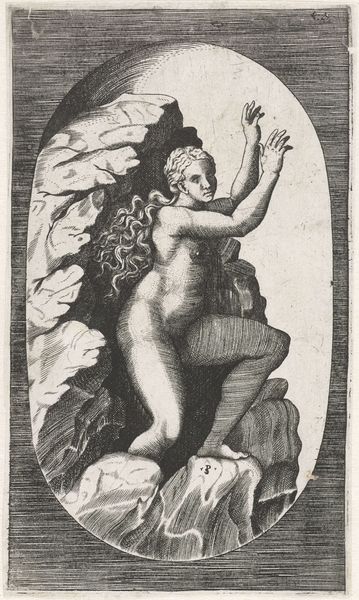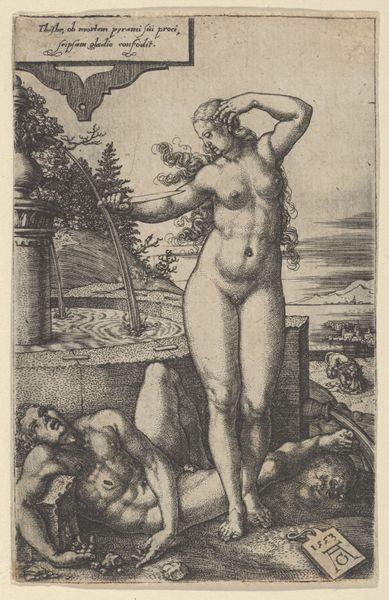
print, engraving
#
narrative-art
# print
#
old engraving style
#
mannerism
#
figuration
#
history-painting
#
northern-renaissance
#
nude
#
engraving
Copyright: National Gallery of Art: CC0 1.0
Editor: So, this is Hendrick Goltzius's "Perseus Freeing Andromeda," an engraving from 1583. It's really striking, this classical scene rendered in such intricate detail. Andromeda, chained to the rock, looks so vulnerable, while Perseus swoops in on Pegasus. What stands out to you in this piece? Curator: The vulnerability you pinpoint is key. Goltzius, working within a Mannerist aesthetic, exaggerates Andromeda's form, almost objectifying her. How does this echo the historical context, the patriarchal structures defining female agency, even within mythology? Is Andromeda a symbol here of silenced voices or colonized bodies? Consider her as a representation of innocence punished, sacrificed to appease a monster, a sea monster born of female rage following Cassiopeia's boast about her daughter's beauty being superior to that of the Nereids. Editor: I see what you mean. Her nudity feels less like an artistic choice and more like a display of powerlessness. It is definitely less of an artistic interpretation than the original intention, which gives it some symbolic cultural weight that changes the way I approach the subject. Curator: Precisely! And how does Perseus's intervention, the act of heroic rescue, function within that power dynamic? Is it truly liberating, or is it simply a transaction – Andromeda traded from one form of domination to another, shifting from a "monster" of the sea to one of sky/land/humanity. Who gets to be the savior? Who defines the monsters? The artist may ask "How is this mirrored by events of conquest that are part of human and colonial history?" Editor: That makes me see the image in a whole new light. It’s not just a heroic rescue; it's a complex commentary on power and subjugation, presented through the lens of mythology. Curator: Exactly. Art allows us to discuss power dynamics and interpret through varying philosophical paradigms; feminist philosophy allows the historical setting to be seen through fresh eyes. Editor: I'll never look at classical art the same way again. Curator: And hopefully that's a good thing, it is just the beginning.
Comments
No comments
Be the first to comment and join the conversation on the ultimate creative platform.
